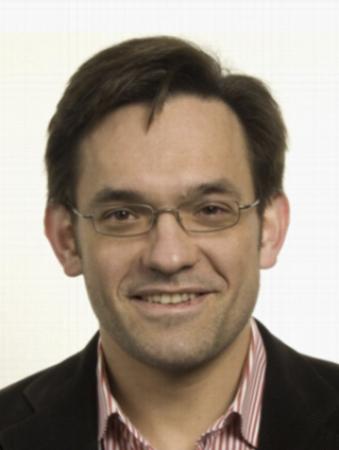
Alex Schekochihin
Oxford University
Thursday, April 13, 2017
3:00pm
Abstract: I will discuss some recent results — numerical and experimental — on the nature of drift-wave turbulence in MAST, obtained in the doctoral theses of my students Ferdinand van Wyk [1], Michael J. Fox [2] and Greg Colyer [3]. At ion scales, in the presence of flow shear, we find numerically [1] a type of transition to turbulence that is new (as far as we know) in the tokamaks, but reminiscent of some fluid dynamical phenomena (e.g., pipe flows or accretion flows in astrophysics): close to threshold, the nonlinear saturated state and the associated anomalous heat transport are dominated by long-lived coherent structures, which drift across the domain, have finite amplitudes, but are not volume filling; as the system is taken away from the threshold into the more unstable regime, the number of these structures increases until they overlap and a more conventional chaotic state emerges. Such a transition has its roots in the subcritical nature of the turbulence in the presence of flow shear. It can be diagnosed in terms of the breaking of the statistical up-down symmetry of turbulence: this manifests itself in the form of tilted two-point correlation functions and skewed distributions of the fluctuating density field, found both in simulations and in BES-measured density fields in MAST [2]. The governing (order) parameter in the system is the distance from the threshold, rather than individual values of equilibrium gradients; the symmetries — and drift-wave/zonal-flow turbulence of conventional type — are restored away from the threshold. The experiment appears to lie just at the edge of this latter transition rather than at the exact stability threshold. At electron scales in MAST, the conventional streamer-dominated state of ETG turbulence turns out to be a long-time transient, during which an initially unimportant zonal component continues to grow slowly, eventually leading to a new saturated state dominated by zonal modes, rather similar to ITG turbulence [3]. In this regime, the heat flux turns out to be proportional to the collision rate, in approximate agreement with the experimentally observed collisionality scaling of the energy confinement in MAST. Our explanation of this effect is based on a model of ETG turbulence dominated by zonal–nonzonal interactions and on an analytically derived scaling of the zonal-mode damping rate with the electron–ion collisionality. These developments open some intriguing possibilities both for enterprising theoreticians tired of the V&V routine and for ingenious experimentalists interested in making use of tokamaks to probe transitions to turbulence in nonlinear plasma systems.
[1] F. van Wyk et al., J. Plasma Phys. 82, 905820609 (2016)
[2] M. F. J. Fox et al., Plasma Phys. Control. Fusion 59, 034002 (2017)
[3] G. J. Colyer et al., Plasma Phys. Control. Fusion 59, 055002 (2017)
Bio: Alex Schekochihin studied at the Moscow “Phystech” and at Princeton, graduating, to the considerable surprise of his PhD supervisor, in 2001. After postdoctoral stints at UCLA, Imperial College and Cambridge, he returned to Imperial as a faculty member in 2006. In 2008, he moved to Oxford, where he is now Professor of Theoretical Physics, providing yet another confirmation of the Peter Principle. Starting with an interest in fusion plasmas, he focused on turbulent dynamo for his PhD and later branched out to work on reconnection, MHD turbulence, astrophysical gyrokinetics, instabilities and turbulence in the solar wind and in galaxy clusters. However, unable to shake off the residual fusion-theory wiring acquired in early career or the intellectual pull that the Culham Laboratory exerts on the inhabitants of Oxfordshire, he returned to the subject in 2008, focusing on various flavours of drift-wave turbulence in tokamaks. Initially determined to be an ivory-tower theoretician, he now fraternises with observers and experimentalists, both real and numerical (but they still — against all evidence to the contrary — think he is an ivory-tower theoretician). His current preoccupations are collisionless plasma turbulence in phase space, plasma astrophysics on nanoparsec scales, drift-wave-zonal-flow interactions in tokamaks, and the quality of coffee in the UK after Brexit.